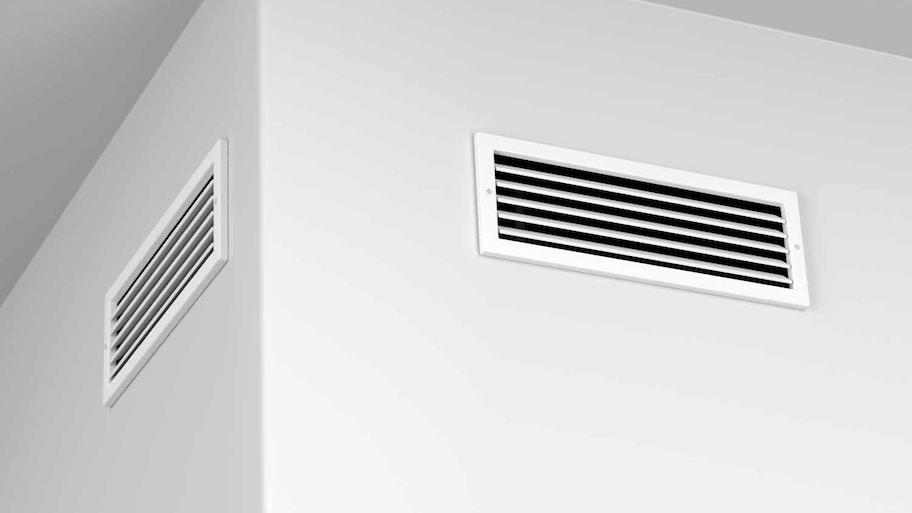How Much Does It Cost to Add a Return Air Vent? [2024 Data]
Normal range: $250 - $500
Adding a return air vent will cost homeowners $350 per vent on average, depending on the vent size and duct material.


The cost to add a return air vent is between $200 and $750 per vent, with the average cost being about $350. Adding a return air vent can be a valuable upgrade to your home's HVAC system, improving air circulation and overall comfort. However, before you break ground on this project, you should understand the factors that influence the cost of adding a return air vent.
- Average
- $350
- Low end
- $200
- high end
- $750
Return Air Vent Installation Cost Factors
When it comes to adding a return air vent, several crucial factors can impact the final cost. Understanding these factors will help you budget appropriately and ensure that you get the most value out of your investment.
Vent Size
The size of the return air vent plays a significant role in determining the cost. Larger vents require more materials and may involve additional labor, leading to a higher overall expense. In general, the cost to install a return air vent is between $10 and $20 per square foot
Duct Material
The new duct that connects your new return air vent to the existing ductwork can be a variety of materials and can also influence the overall cost. Different types of ductwork have varying price points and offer unique benefits. For example, while flexible polyester ducts range from only $1 to $4 per linear foot, they tend to be less durable and have the shortest lifespan. Sheet metal ductwork, on the other hand, is much more durable, but it has a higher price point of $4 to $12 per linear square foot.
| Duct Material | Cost per Linear Square Foot |
|---|---|
| Flexible polyester | $1–$4 |
| Flexible aluminum | $2–$5 |
| Flexible insulated | $2–$6 |
| Fiberglass/fiberboard | $4–$7 |
| Sheet metal | $4–$12 |
Labor
When adding a return air vent, labor expenses play a substantial role. Ductwork installation labor costs typically range from $5 to $10 per linear foot. In cases where the ductwork is situated in hard-to-reach areas, such as a cramped crawl space, additional labor or specialized tools may be necessary.
DIY vs. Hiring a Pro to Install a Return Air Vent
Deciding whether to undertake the installation of a return air vent as a DIY project depends on various factors. If you’re a skilled DIYer with some HVAC experience, installing the new return vent yourself will certainly save on labor costs. However, this project can be complex. It may involve cutting drywall and ductwork as well as considerations such as proper ductwork placement and sizing to ensure efficient airflow.
Local duct installers have the expertise to handle these intricacies, ensuring optimal performance and safety. For those lacking HVAC knowledge, hiring a pro is recommended, as it reduces the risk of costly mistakes and ensures the job is done correctly. Ultimately, the choice between DIY and professional installation should align with your comfort level, skills, and budget.
Cost of Common Add-Ons

In addition to the primary installation costs, there are a few common add-ons that you might consider when adding a return air vent. Understanding the costs associated with these extras can help you plan your project effectively.
Air Duct Cleaning
While adding a return air vent, it's an ideal time to consider having your existing air ducts cleaned to remove any dirt and debris. Air duct cleaning costs between $150 and $780, depending on the type and size of your ductwork.
Duct Insulation
Insulating your ducts can have long-term benefits for your HVAC system's energy efficiency and performance, and it can help keep your home at a comfortable temperature. Air duct insulation costs roughly $1 to $6 per square foot.
Asbestos or Mold Problems
If mold or asbestos is found during the process of adding a return air vent to your home, addressing them immediately is crucial. These hazardous substances can be dangerous to the health of you and your loved ones, so incurring the cost of testing, inspection, and removal is necessary:
Mold inspection costs between $200 and $650
Mold remediation costs between $450 and $6,000
Asbestos inspection costs between $250 and $700
Asbestos removal costs between $700 and $2,200
Ways to Save Money When Adding a Return Vent
Saving money when adding a return air vent is a goal for many, so here are some cost-saving tips:
DIY if you can: If you have the necessary skills with drywall repair and the necessary HVAC knowledge, consider doing the installation yourself to save on labor costs.
Choose the ideal location: When deciding on a location for your return vent, choose a spot that minimizes the need for extensive ductwork modifications.
Go with an affordable duct material: Select cost-effective duct materials like flexible polyester or aluminum.
Bundle HVAC projects: If you have other projects on your HVAC to-do list—like air duct cleaning or HVAC inspections—consider bundling them together to potentially reduce overall costs.
Frequently Asked Questions
Return air vents can be located in any room of your house, but it's essential to choose the location strategically. Placing a return vent in a central area, such as a hallway or a larger living space, is more effective for balanced airflow and temperature control throughout your home. However, factors like the HVAC system's design, your specific heating and cooling needs, and the accessibility of ductwork may influence the optimal placement of a return air vent.
The number of return air vents a house should have depends on its overall square footage. You'll need one supply vent and one return vent for every 100 to 150 square feet of living space. This means that, ideally, there should be at least one return air vent in every room. However, if the room is 100 square feet or larger, it's better to have two or three. A 2,000-square-foot home should have between 13 and 20 return air vents, in total.
How often you clean your return air vent can vary based on several factors, including your indoor environment, the presence of allergies, and the accumulation of dust and debris. As a general guideline, you should inspect and clean your return air vent at least once a year. However, if you notice a significant buildup of dust, mold, or allergens, more frequent cleaning may be necessary to maintain good indoor air quality and ensure your HVAC system operates efficiently.
